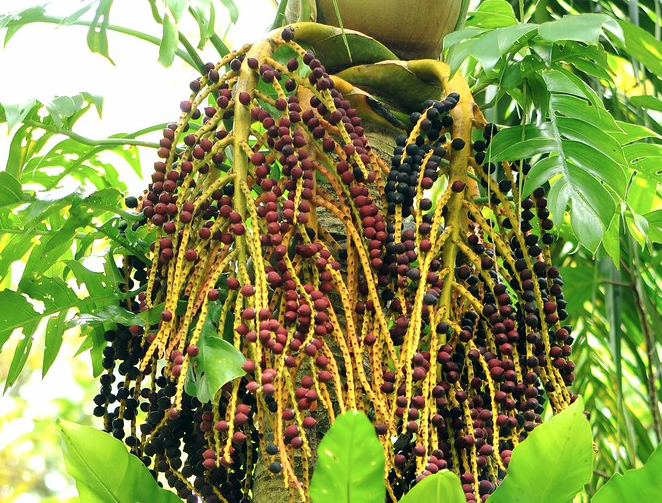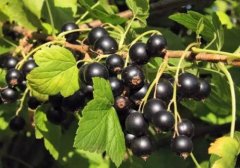Is mountain betel nut betel nut? What are the characteristics of the difference between betel nut and betel nut
Areca nut is a familiar plant name, and it is also a plant chewed by many people. The appearance of areca nut tree is also well known. Therefore, when the name "mountain areca nut" appears in books, most people will naturally associate it directly with areca nut, or even think that it is just areca nut growing on the mountain. The two species are also very similar in appearance, which is easy to confuse, but they are actually completely different species.
Pinanga tashiroi Hayata and Areca catechu L. Both belong to Arecaceae family. Although they are very similar in Chinese names, they belong to two different genera.
Areca is a genus of betel nut, not native to Taiwan. It originated in Malaysia and the Philippines in tropical Asia. It was introduced into Taiwan by the Dutch in the 16th century. It has a long history and has become one of the indispensable plants in many people's lives. Along with Taiwan's cultural development, many place names named after areca are common, and in terms of the culture of eating areca, different regions have developed different characteristics.
However, Areca castanea L. belongs to the genus Areca L., which is not only native to Taiwan, but also endemic to the whole world. It is only distributed in Orchid Island, and its breeding area is narrow. The plants grow sporadically in the valleys of Orchid Island mountains or in the virgin forests from wet hillsides to ridge lines. The 2017 Red List of Vascular Plants in Taiwan has classified Areca catechu as National Endangered Species (NEN), one of Taiwan's endangered species. Although the name of mountain betel nut is catchy, not many people have actually seen it, and few people can recognize it.
The tree height is several meters, the branches are spineless and unbranched, the upper part is green, the lower part is grayish brown after aging, the leaf sheath will leave obvious grayish brown ring pattern on the stem after falling off, and the most basic part of the plant is obviously enlarged; The leaves are clustered at the top of the plant, about 1 to 2 meters long, showing a pinnate compound leaf, with several leaflets fused at the tip, and then irregularly divided, each leaflet is lanceolate linear, and the leaflet closest to the base of the leaf is slender filiform, as if it were tied to a green ribbon on the leaf axis.
Different from the leaf characteristics of Areca catechu, the leaf surface of Areca catechu is smooth and hairless, but on the vein of leaflet leaf cover, it is densely covered with rust-colored hairy scales, the leaf axis is triangular, the petiole extends downward to form a large leaf sheath, which covers the stem layer by layer, the leaf sheath is green to yellow brown, and the surface is obviously rust-colored or golden punctate scales, which is one of the important characteristics of Areca catechu.
A mature betel inflorescence with immature male flowers arranged like teeth; rust or golden punctate scales visible on leaf sheaths.
The inflorescences of betel nut are borne at the base of the lowest leaf, and are fleshy compound spikes covered with huge obovate spathes. When flowering, the bright yellow spathes fall off, and the whole inflorescence will droop open. Flowers are unisexual flowers, monoecious plants, grow on the same inflorescence, every 2 male flowers are neatly arranged at the lower edge of each female flower, male flowers have 3 petals and 3 calyx, petals are obviously larger than calyx, milky white, each other is covered with tiles, like teeth, each male flower contains several stamens, female flowers are obviously much smaller than male flowers, purple petals and sepals surround the lower edge of female flowers, are covered with tiles, stigma 3-lobed, mature earlier than male flowers. Male flowers mature in the morning open, flowering is very short, the afternoon will be completely withered, only female flowers on the inflorescence axis.

- Prev

What kind of plant is blackcurrant? What are the uses and effects of blackcurrant leaves?
Blackcurrant (Ribes nigrum), sometimes called blackcurrant, is a woody shrub native to Europe and Asia. Although this raisin plant is grown for its small black berries, it is also valuable for leaves and is said to be very important as an herb
- Next

There are new changes in the fishing moratorium policy in 2019, and there will be incentives for the protection and recovery of marine resources during the fishing moratorium.
In order to encourage fishermen to suspend fishing in Hong Kong within a certain period of time, the Fisheries Department originally laid down the "key points for the implementation of voluntary fishing moratorium", and recently announced the "voluntary fishing moratorium incentive scheme" in accordance with item 2 of Article 59 of the Fisheries Law. among them, the reward for each sampan and fishing raft
Related
- A course of planting techniques and methods on how to grow carrots
- How to plant the latest tulips?
- Is it better to pick tea in the morning or in the afternoon? When is the best time for tea to be picked? what is the third or fifth tea?
- Launch Yuanxiao Happy combination Haocha + Tea Yuan healthy Taste
- Penghu Tourism "Fireworks 20 Parade with You"
- 2022 West Lake Happiness holds "Digital Revitalization Voucher" and draws iphone13 and laptop.
- Banqiao Fuzhou social houses are designed to change start-up combined with police elimination to create a safe and livable environment
- The convenient measure of "mechanical weeding" in Xinbei has been abused and the Agriculture Bureau has imposed heavy penalties on the illegal land consolidation.
- Changgeng University Joins Hands with Four Memory Factories to Rescue Memory Talent Shortage
- The list of Taiwan's top 100 MVP managers is listed by the Director-General of the Farmers' Association of Sanxia District.

